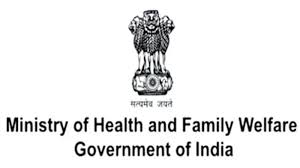DRAFT GUIDELINES ON PASSIVE EUTHANASIA IN INDIA

- 30 Sep 2024
Introduction
The Union Health Ministry of India has released new draft guidelines regarding passive euthanasia, aiming to address the complexities surrounding the withdrawal of life support for terminally ill patients. This move is significant, as it provides clarity for both medical professionals and patients regarding end-of-life care. The guidelines represent an effort to bridge the existing regulatory gap, ensuring ethical practices in sensitive medical decisions.
Understanding Euthanasia
Definition and Types
Euthanasia refers to the practice of intentionally ending a patient's life to alleviate suffering. The term originates from Greek, meaning "good death." Euthanasia can be categorized into several types:
- Active Euthanasia: Actively causing death, such as administering a lethal injection.
- Passive Euthanasia: Withholding life-sustaining treatments, allowing death to occur naturally.
- Voluntary Euthanasia: Conducted with the patient’s consent.
- Involuntary Euthanasia: Performed without patient consent, often in cases where the patient’s wishes are unknown.
Legal Context
While active euthanasia remains illegal in India, passive euthanasia was legalized by the Supreme Court in March 2018. This legal framework allows for the withdrawal of life support under specific circumstances.
Key Provisions of the Draft Guidelines
Conditions for Withdrawal of Life Support
The guidelines stipulate four critical conditions under which life support may be withdrawn:
- Brainstem Death: The patient must be declared brainstem dead as per the Transplantation of Human Organs and Tissues Act (THOA) of 1994.
- Medical Prognosis: The patient's condition must be advanced, indicating that aggressive therapeutic interventions are unlikely to yield benefits.
- Informed Refusal: The patient or their surrogate must document an informed refusal of continued life support following an understanding of the prognosis.
- Legal Compliance: Procedures must align with the legal principles established by the Supreme Court.
Decision-Making Process
The decision to withdraw life support requires a multi-tiered approach:
- Primary Medical Board (PMB): A group of at least three physicians must reach a consensus and explain the medical situation to the patient’s surrogate.
- Secondary Medical Board (SMB): A further validation by another set of three physicians, including one appointed by the district’s Chief Medical Officer, is necessary to confirm the PMB’s decision.
Advance Medical Directives
The guidelines emphasize the importance of advance medical directives, allowing individuals to document their healthcare preferences in case they lose decision-making capacity.
Ethical Considerations
Concerns from the Medical Community
While the guidelines aim to provide clarity, there are concerns regarding the legal scrutiny that doctors may face. The Indian Medical Association (IMA) has raised issues about the potential for undue stress on medical professionals, who historically have made these decisions in good faith without formal guidelines. They argue that placing such decisions within a regulatory framework might misinterpret standard medical practices.
Patient Autonomy and Dignity
The guidelines uphold the fundamental rights to autonomy, privacy, and dignity. Patients capable of making healthcare decisions can refuse life-sustaining treatments, even if such refusals may lead to death. The emphasis on informed decision-making seeks to ensure that patients can navigate their end-of-life choices with dignity.
Implications for Policy and Practice
Need for Stakeholder Feedback
The Health Ministry has solicited feedback from stakeholders, including healthcare professionals and the public, by October 20, 2024. This participatory approach aims to refine the guidelines and address any concerns regarding their implementation.
Balancing Ethical and Practical Considerations
The draft guidelines represent a significant step towards formalizing the process of passive euthanasia in India. They attempt to balance ethical considerations surrounding patient autonomy with the practical realities faced by healthcare providers.
Conclusion
The introduction of draft guidelines on passive euthanasia marks a pivotal moment in India's healthcare landscape. By clarifying the legal and ethical frameworks surrounding end-of-life decisions, these guidelines aim to enhance the dignity of terminally ill patients while providing essential support to healthcare professionals. The ongoing discourse surrounding these guidelines will be crucial in shaping their final form and ensuring their alignment with societal values and ethical norms.
